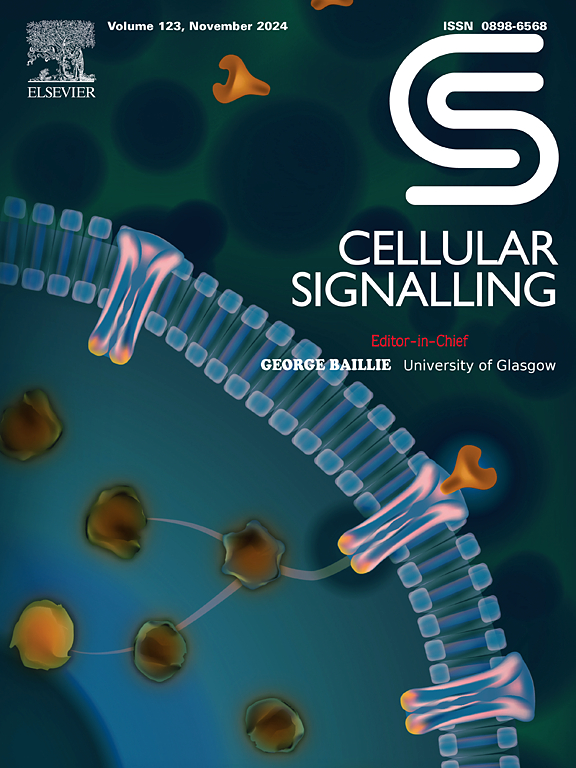LAPTM5通过抑制LAMP1泛素化来稳定溶酶体膜并维持自噬通量,从而在NSCLC中赋予顺铂耐药性
IF 4.4
2区 生物学
Q2 CELL BIOLOGY
引用次数: 0
摘要
顺铂是治疗非小细胞肺癌(NSCLC)的一种广泛使用的化疗药物,但顺铂耐药性仍然是一项重大的临床挑战。溶酶体跨膜蛋白5(LAPTM5)是一种溶酶体膜蛋白,与大自噬/自噬有关,但其确切机制尚未完全阐明。在这项研究中,我们证明了LAPTM5通过维持溶酶体膜稳定性和保持自噬通量来促进NSCLC的顺铂耐药性。机理研究表明,LAPTM5与LAMP1竞争结合WWP2,从而抑制LAMP1泛素化和降解,最终保持溶酶体膜的稳定性。LAPTM5 基因敲除会增加溶酶体膜的通透性,导致酪蛋白酶 D(CTSD)的释放,从而提高细胞内活性氧(ROS)的水平;进一步破坏溶酶体膜的稳定性并加速细胞死亡。我们的研究结果阐明了 LAPTM5 通过溶酶体膜稳定化导致顺铂耐药性的机制,并确定 LAPTM5 是克服 NSCLC 顺铂耐药性的潜在治疗靶点。本文章由计算机程序翻译,如有差异,请以英文原文为准。

LAPTM5 confers cisplatin resistance in NSCLC by suppressing LAMP1 ubiquitination to stabilize lysosomal membranes and sustain autophagic flux
Cisplatin is a widely used chemotherapeutic agent in the treatment of non-small cell lung cancer (NSCLC), but cisplatin resistance remains a significant clinical challenge. Lysosomal transmembrane protein 5 (LAPTM5) is a lysosomal membrane protein implicated in macroautophagy/autophagy, although its precise mechanism has yet to be fully elucidated.In this study, we demonstrated that LAPTM5 promotes cisplatin resistance in NSCLC by maintaining lysosomal membrane stability and preserving autophagic flux. Mechanistic investigations showed that LAPTM5 competes with LAMP1 for binding to WWP2, thereby inhibiting LAMP1 ubiquitination and degradation, which ultimately preserves lysosomal membrane stability. LAPTM5 knockdown increases lysosomal membrane permeability, leading to the release of cathepsin D (CTSD), which elevates intracellular reactive oxygen species (ROS) levels; further destabilizing the lysosomal membrane and accelerating cell death. Our findings elucidate the mechanism by which LAPTM5 contributes to cisplatin resistance through lysosomal membrane stabilization and identify LAPTM5 as a potential therapeutic target for overcoming cisplatin resistance in NSCLC.
求助全文
通过发布文献求助,成功后即可免费获取论文全文。
去求助
来源期刊

Cellular signalling
生物-细胞生物学
CiteScore
8.40
自引率
0.00%
发文量
250
审稿时长
27 days
期刊介绍:
Cellular Signalling publishes original research describing fundamental and clinical findings on the mechanisms, actions and structural components of cellular signalling systems in vitro and in vivo.
Cellular Signalling aims at full length research papers defining signalling systems ranging from microorganisms to cells, tissues and higher organisms.
 求助内容:
求助内容: 应助结果提醒方式:
应助结果提醒方式:


